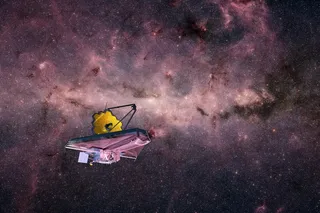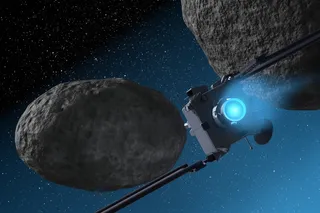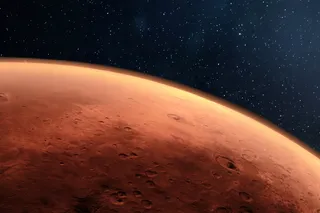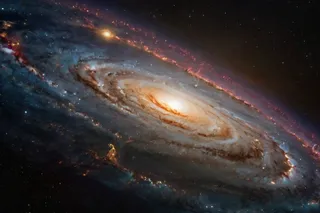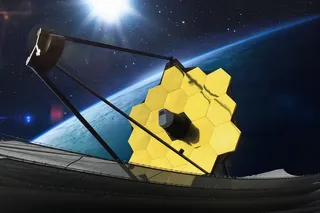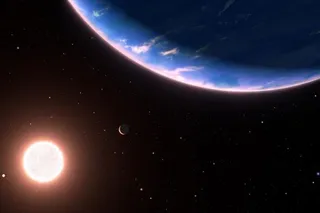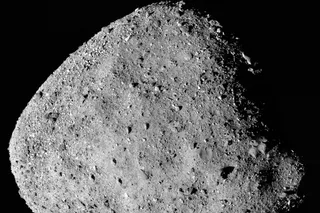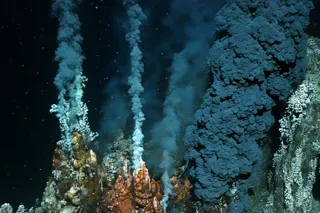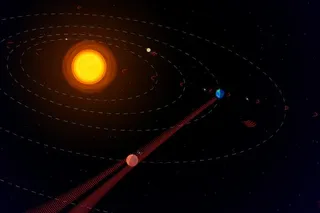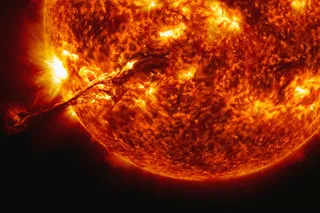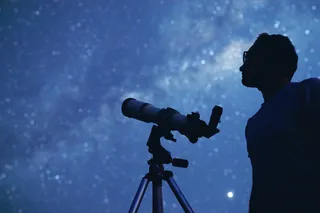What’s better for your lungs? A breath full of dust from the moon or from a city on Earth? The answer seems simple enough — especially since the latter is experienced by humans each and every day. But a new study in Life Sciences in Space Research suggests that the healthier option is more surprising than you might think.
Investigating the impact of moon and city dust on human lung cells, the analysis found that the dust from the moon (though still bad) is better for you than the dust from a city on Earth, being less harmful and less toxic to your cells overall.
According to the study authors, the results complicate the conclusions from the Apollo mission reports (from the 1960s and 1970s) and from past research, which asserted that the dust on the moon posed a severe threat to astronauts. Instead, the analysis reveals that the risk of dust is still present (and still serious), but probably a little less severe than previously thought, providing positive news for future missions to the moon.
Read More: We Still Don't Know How to Deal With Moon Dust
Allergies on the Moon
Apollo mission astronauts weren’t allergic to the moon, though they might’ve thought that they were. Thanks to their exposure to lunar dust, which they experienced following their extravehicular excursions on the moon’s surface, they reported irritation in their eyes, noses, and throats. In fact, Apollo 17 astronaut Harrison Schmitt suffered from what he had dubbed “lunar hay fever” thanks to the dust that entered the landing module, with symptoms including itchy eyes, sneezing, and a sore throat.
“Fine dust that had clung to their spacesuits became airborne in the confined cabin,” said study author Michaela B. Smith, a researcher at the University of Technology, Sydney, according to a press release. “[It] was subsequently inhaled, leading to respiratory issues.”
Based on these astronauts’ symptoms, and based on later research on lunar dust simulants, it was thought that the substance was extremely harmful to humans. Setting out to test this theory with LMS-1 and LHS-1 — the best simulants of lunar dust that are available today — the study authors examined the effects of lunar particles against those of city particles, which they collected from the air in Sydney, Australia.
They found that while the lunar dust caused physical irritation (as well as some inflammation and toxicity), it did not contribute to as much inflammation or toxicity as the city dust, which was essentially a collection of the airborne particulate matter that causes city air pollution.
“If you inhale it, you’ll sneeze, cough, and have some physical irritation,” Smith said of the lunar dust tested in the study. “But it’s not highly toxic.”
A Real, But More Minimal, Risk
Restricting their research to the tiniest particles — those around 2.5 micrometers across or smaller — the study authors concentrated on the dust that’s easily inhaled and tiny enough to invade the lungs. Introducing these particulates to cells from the lungs’ upper and lower regions, the team watched as the cells internalized the dust.
The study authors saw that the lunar dust simulants caused physical damage when they were taken in by the cells, largely due to their sharp, irregular shape. But they also saw that LMS-1 and LHS-1 caused less inflammation and less oxidative stress — an important indicator of toxicity — than the city dust did. According to the team, the results suggest that the threat of dust for astronauts is actually milder on the moon than on Earth, assuming that their exposure to dust on the moon occurs at a similar rate to their exposure on Earth.
While the findings are relevant for future trips to the moon, NASA scientists are still working to reduce the threat of dust for its Artemis III mission, which will be the first lunar landing to bring humans to the moon’s surface in more than fifty years.
“The results contribute to the safety case for returning humans to the moon,” Smith said. “While this research helps to reduce concerns about one critical risk factor, it’s important to note that NASA continues to treat dust exposure seriously.”
Read More: Fine Mars Dust May Pose a Risk to Astronauts' Health
Article Sources
Our writers at Discovermagazine.com use peer-reviewed studies and high-quality sources for our articles, and our editors review for scientific accuracy and editorial standards. Review the sources used below for this article:
Life Sciences in Space Research. Lunar Dust Induces Minimal Pulmonary Toxicity Compared to Earth Dust




